I know this question has been somewhat answered here, here and here.
In all of these examples the dot/bubble size is based on a third factor such as size.
However, in my data, I only have 2 variables, xval and yval.
library("ggplot2")
xval <- c("0","0.5","0.25","0","0")
yval <- c("1","0.5","0.25","0.25","1")
df.test <- data.frame(xval,yval)
df.test
p <- ggplot(df.test, aes(x = xval, y = yval)) + geom_point()
p
Here is df.test
xval yval
1 0 1
2 0.5 0.5
3 0.25 0.25
4 0 0.25
5 0 1
and here is p
What I would like is each dot/bubble size to depend on the number of occurrence of the observations of this coordinate. For instance, (0,1) would be to be twice as big as the others dots. I would like to avoid adding a 3rd column to my data frame, and leaving R doing it automatically.
I don't know if this can be done without having to play too much with the data... Any insight would be much appreciated :)

